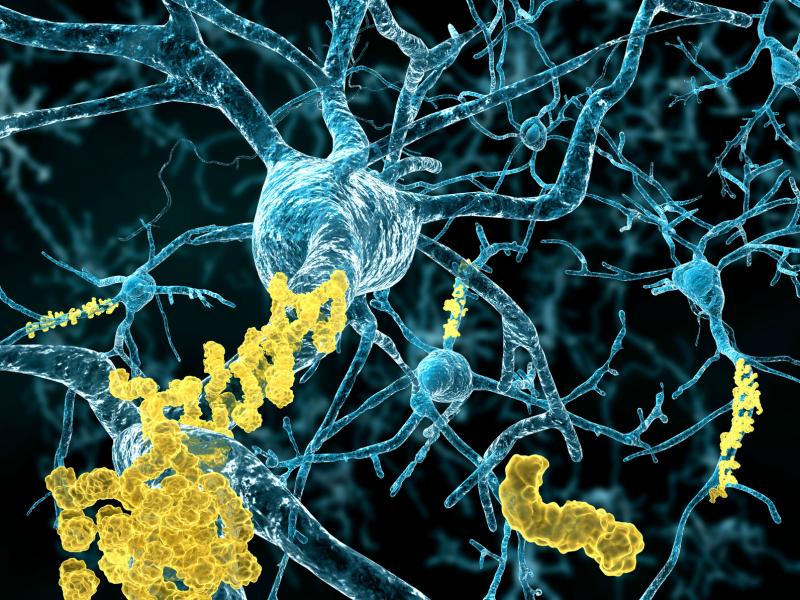 Many scientists believe that amyloids are key to the disease's effect on neurons
Many scientists believe that amyloids are key to the disease's effect on neuronsWhile cerebrospinal fluid (CSF) neurofilament light (NfL) levels indicate general and overall neurodegeneration, total tau (T-tau) and neurogranin (Ng) concentrations may be markers for neuronal response to amyloid pathology and neurodegeneration specific to Alzheimer’s disease (AD), a recent study has shown.
The study included 777 community-based adults (aged 50–95 years; 57.0 percent male) whose CSF samples were subjected to electrochemiluminescence and enzyme-linked immunosorbent assays for the measurement of NfL, Ng and T-tau levels.
Eighty-three (10.7 percent) participants were diagnosed with mild cognitive impairment (MCI), while seven (0.9 percent) had dementia. The median concentrations of NfL and T-tau levels increased with disease severity; no such effect was reported for Ng.
Multivariable analysis adjusted for covariates found that a diagnosis of MCI was associated only with elevated NfL levels, and not with high concentrations of T-tau or Ng. Stratifying by cognitive status, the correlations between cognition and each of the CSF markers were stronger in those with MCI or dementia.
Moreover, both gait speed and scores in the Charlson comorbidity index were more strongly associated with CSF T-tau and Ng in patients who were positive for amyloid pathology.
“As CSF NfL, T-tau and Ng move toward use in the clinic or for clinical trials as markers of disease progression and neurodegeneration, it is critical to better understand what these markers are measuring,” said researchers.
“Furthermore, with a move to clinical use, the development of reference ranges is needed,” they added.